Astera Labs has a new module that might just change system design. The new Astera Labs Aries PCIe/ CXL Smart Cable is an active electrical cable module that adds a retimer to PCIe/ CXL cables. As a result, one does not need to put retimers on motherboards and risers while also extending cable lengths to 7 meters.
Astera Labs Aries Active Electrical Cable Module for CXL and PCIe Runs
The new Aries PCIe/ CXL Smart Cable Module has one of the company’s Aries retimers and is designed to be packaged inside cables. Going from a passive to an active cable increases cost, but it also allows one to use longer cables.
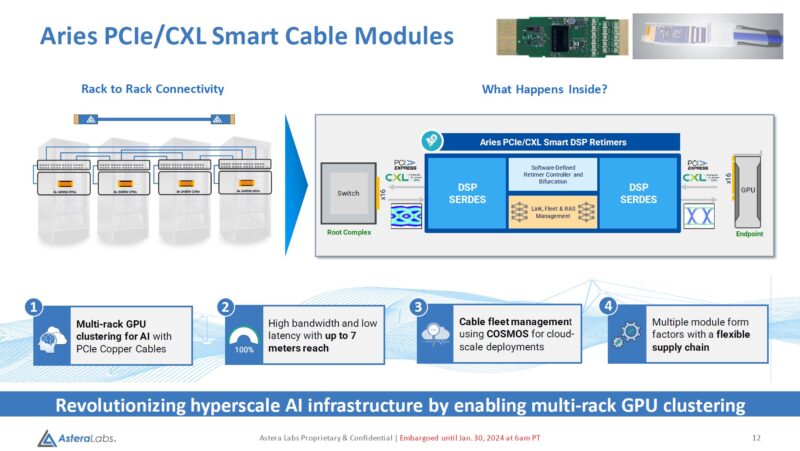
Aries is part of the company’s PCIe/ CXL line. Underpinning the entire portfolio is COSMOS, the company’s management platform. If you have a PCIe Gen5 device or CXL device that ends up not being entirely compliant, then that might be something that the retimers can fix using COSMOS. It is also a way to get telemetry data from large PCIe and CXL deployments.
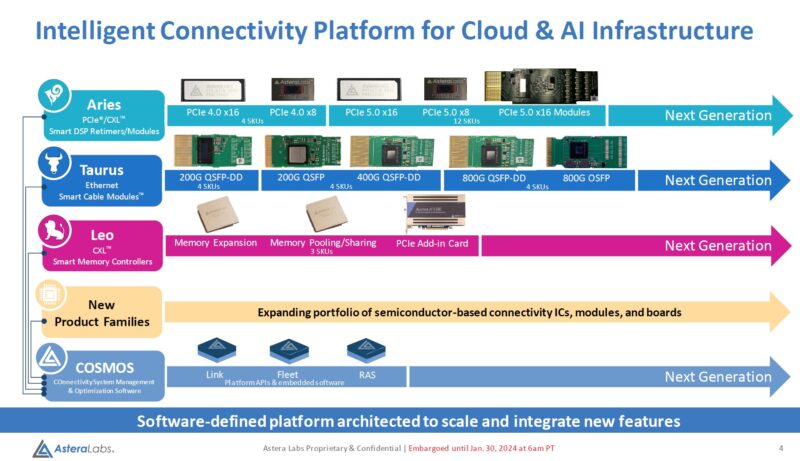
Passive DACs are generally limited to 3 meters, or within a rack. The Active Electrical Cable is designed to go up to 7m across racks. In the diagram, notice that it is not a straight increase in BOM cost since the retimer can move from the riser card, motherboard, GPU daughterboard and etc, to the cable.
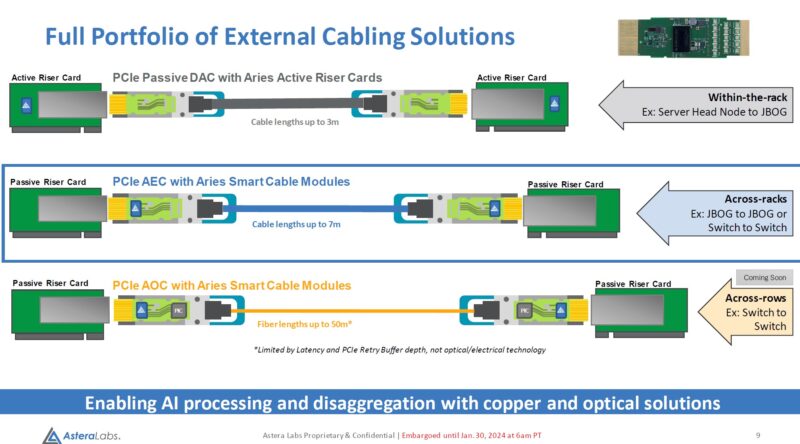
Next will be active optical cables. One of the challenges with spanning longer distances with PCIe and CXL over distance is that it adds a few ns of latency for each meter that the signal travels. Still, being able to build larger PCIe or CXL topologies across multiple racks allows companies to spread power and cooling or to just build larger topologies.

For AI servers, typically motherboards and accelerator boards have retimers to drive signals between the two PCBs.

Although less trendy, another use case Astera Labs mentioned is the ability to have PCIe and CXL connectivity to CXL memory JBOM or just a bunch of memory shelves.
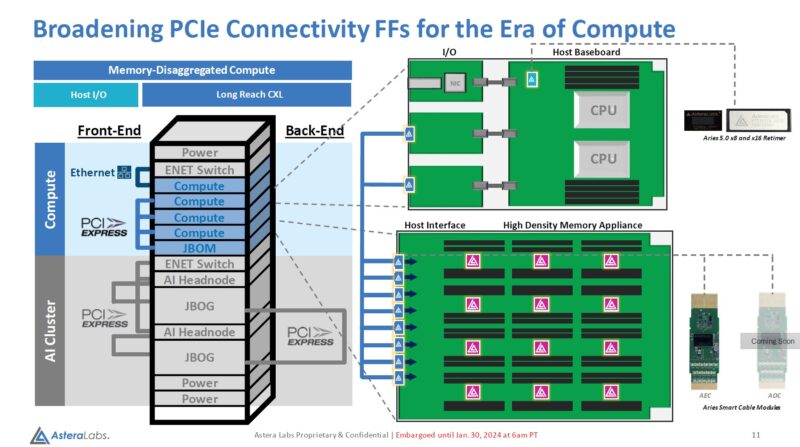
Astera Labs imagines a world with its Leo CXL memory controllers connecting memory to CXL and then Aries AECs connecting the JBOM to compute nodes.
Final Words
In the PCIe Gen5/ CXL world, retimers are a big business. CXL adoption has been a bit slower than expected as folks transitioned budgets to AI. Still, even in AI systems, the size and scale of the systems means PCIe Gen5 signaling needs to go further, making retimers a small but surprisingly important part of the system infrastructure.
The company said it is not selling the cables. Instead it is selling the modules that hyper-scalers and OEMs can have their cable providers integrate.



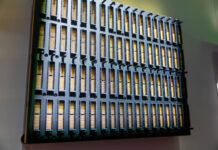

What is that connector in the first picture? Is that 7 data pins stacked lengthwise along the plug, by ~18 wide, for a total of 126 connections (*plus* ground and power) on one short connector?
It is difficult to find information, but I think it is an OSFP-XD connector: https://www.osfpmsa.org/assets/pdf/OSFP-XD_PCIe_external_cable_discussion_material_20230220.pdf
Supporting active cabling is a key concept for the future of wired connectivity regardless of market. We’re at the edge of what can be done with copper, even at short distances. The ability for a connector to support active-optical-cabling for those niche long distance needs are going to be critical as the minimum distance for what is considered ‘long distance’ shrinks.
Copper is still desirable not just from a cost perspective but also from a latency perspective because signal propagation through copper is slightly faster than optical (think 0.75c to 0.85c, vs. 0.70c to 0.80c for optical, with c being the speed light through a vacuum). That 0.05c general advantage for copper does matter for latency critical applications.